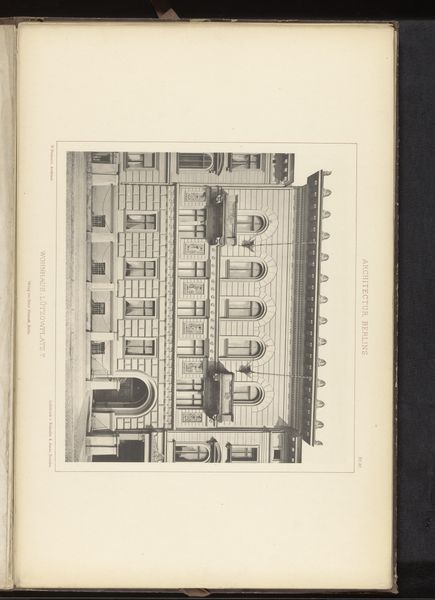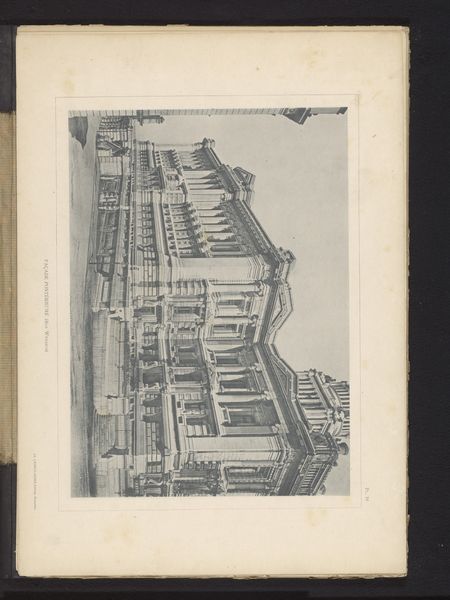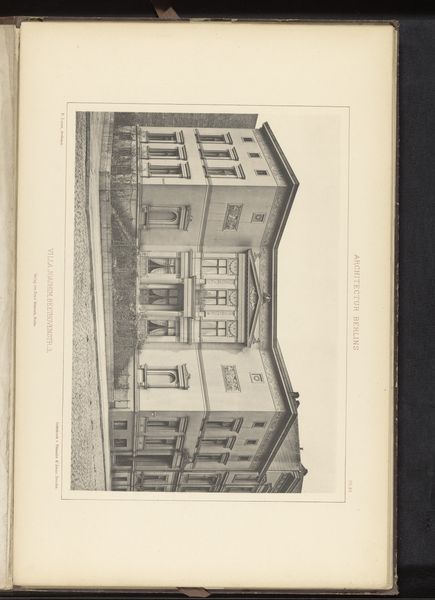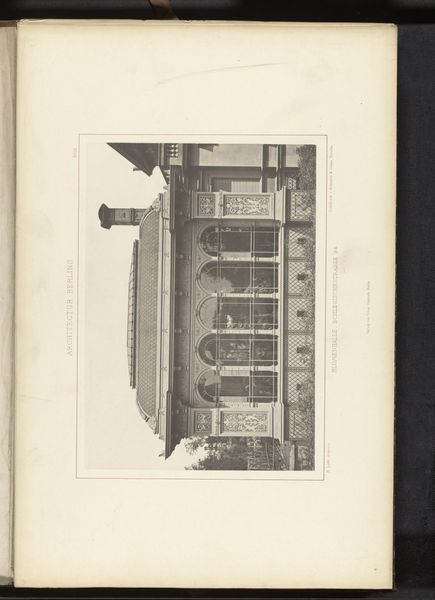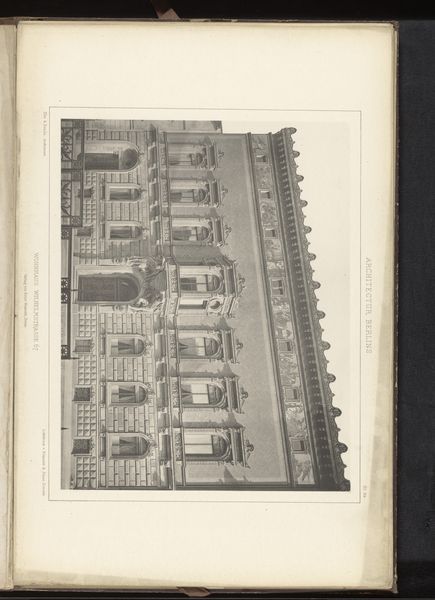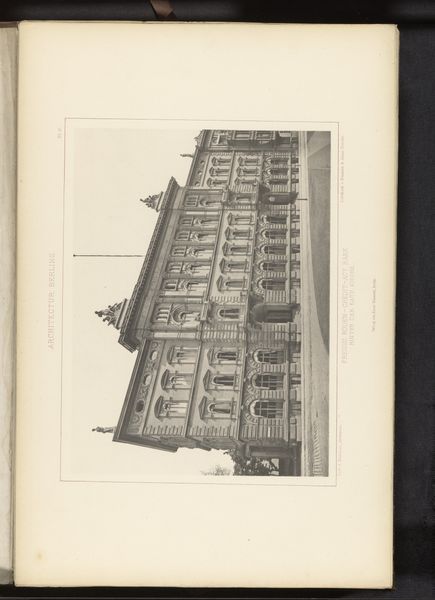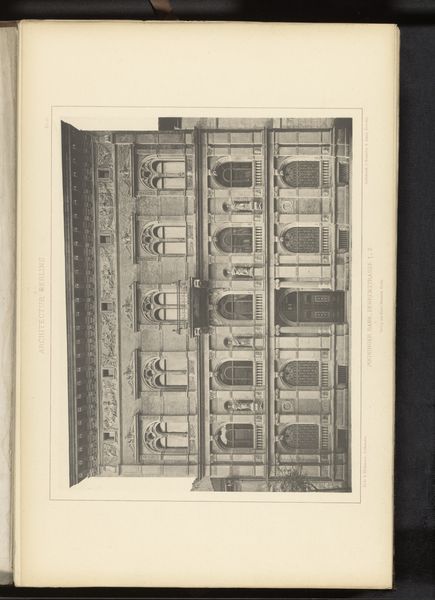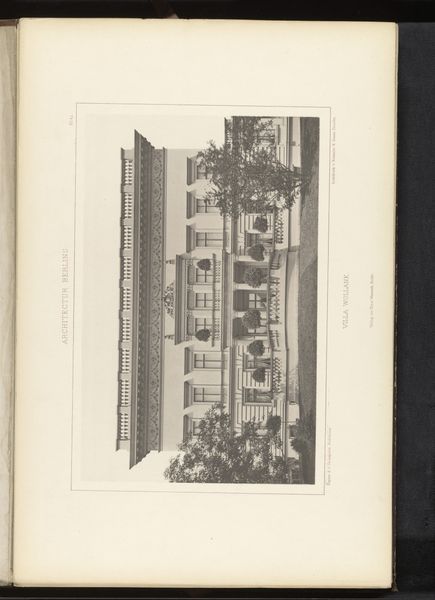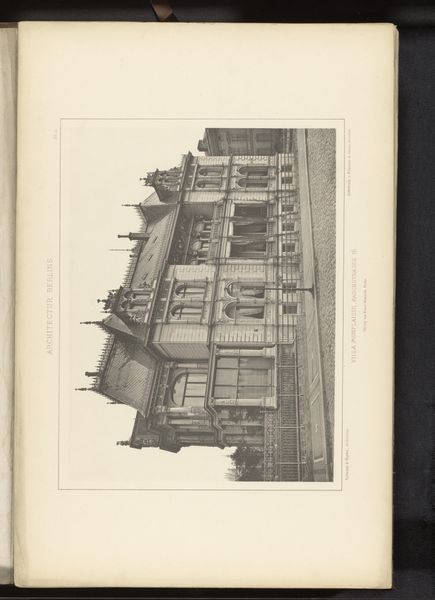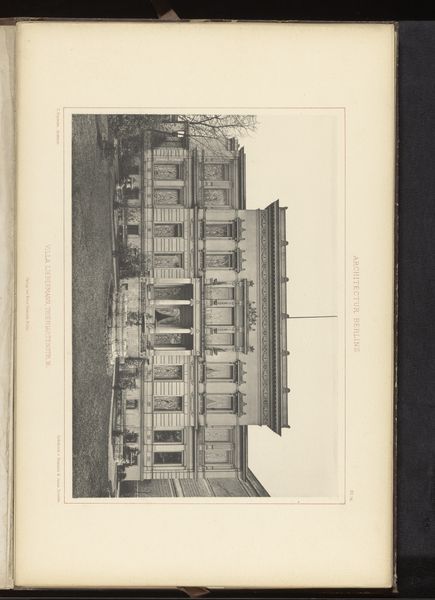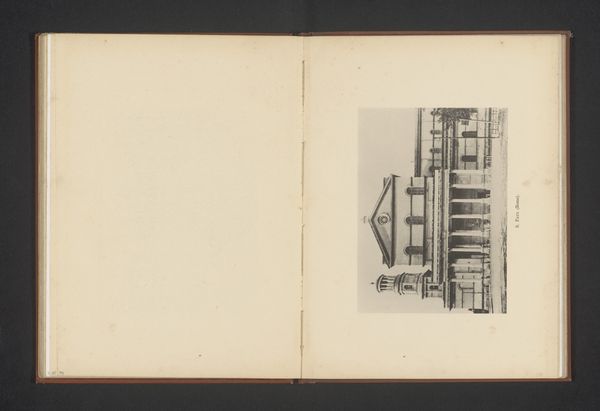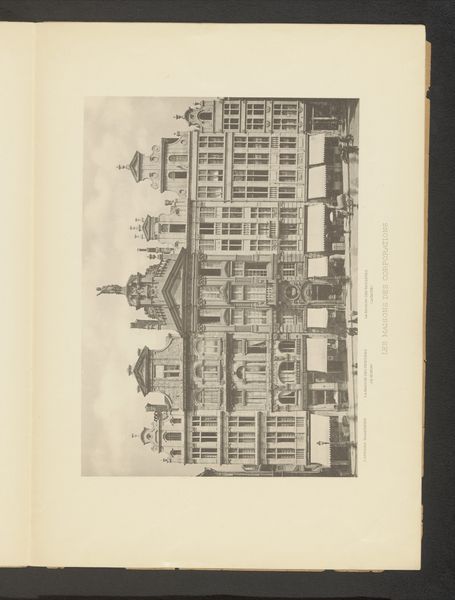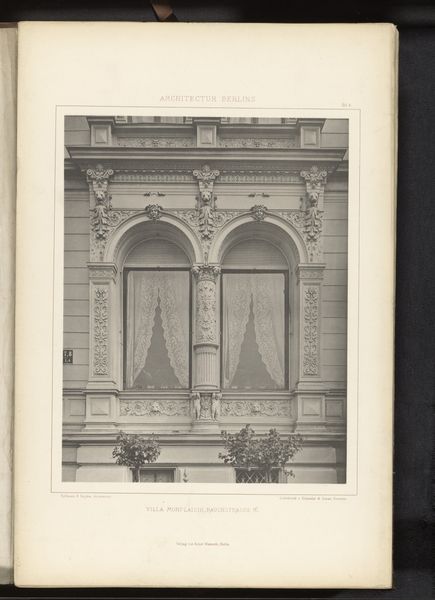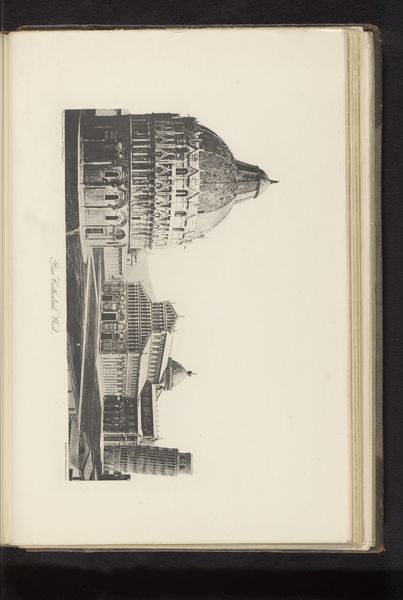
Gezicht op villa Kutter aan de Kurfürstenstrasse 115 in Berlijn, Duitsland before 1877
0:00
0:00
drawing, pencil, architecture
#
drawing
#
aged paper
#
homemade paper
#
mechanical pen drawing
#
sketch book
#
personal sketchbook
#
geometric
#
pen-ink sketch
#
pencil
#
pen and pencil
#
pen work
#
sketchbook drawing
#
sketchbook art
#
architecture
#
realism
Dimensions: height 243 mm, width 324 mm
Copyright: Rijks Museum: Open Domain
Editor: This is an architectural drawing titled "Gezicht op villa Kutter aan de Kurfürstenstrasse 115 in Berlijn, Duitsland," attributed to an anonymous artist before 1877. The work, primarily in pencil and pen, captures a building facade. What strikes me is the detailed realism; what does it bring to mind for you? Curator: Immediately, the drawing calls to mind the rapid industrialization of Berlin during that era and the construction boom that shaped its urban landscape. We see the architecture not just as an aesthetic form, but as a symbol of emerging power structures and social inequalities. Do you notice how the precision of the drawing seems to legitimize the existence and power of this villa? Editor: Absolutely. There's an undeniable formality to it. What I find interesting is its potential presence in a sketchbook. It begs the question, why was this building recorded in this personal manner? Curator: That's insightful. We might consider this in relation to broader discussions of representation and power. Whose perspective are we seeing? How does the act of sketching contribute to a certain narrative? Perhaps the sketchbook provided an alternative form for architectural commentary or critique in a society undergoing profound transformations. Was the drawing intended for private reflection or perhaps something else? Editor: That's a powerful perspective. I had initially approached this as just an architectural drawing, but understanding the social context completely changes the interpretation. Curator: Exactly. This image serves as a reminder to continually examine artworks in light of broader historical and theoretical frameworks, including critical race theory, class analysis, and gender studies. Each line contains an intersection of stories waiting to be revealed through asking how systems of power influenced and informed artistic creations. Editor: Thank you, that’s definitely given me a lot to think about regarding art and its interaction with power dynamics!
Comments
No comments
Be the first to comment and join the conversation on the ultimate creative platform.
